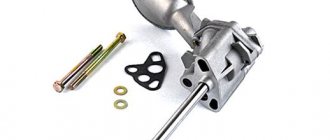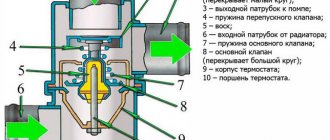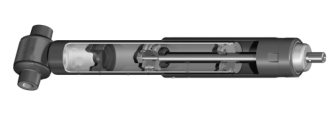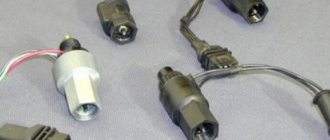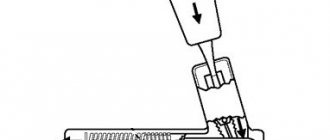15.07.2019
| (Votes: 1, Rating: 5) |
Issues discussed in the material:
- Why do you need a timing belt?
- How to visually check the timing belt
- What other ways can you check the timing belt?
- Why is it so important to check your timing belt?
The most important components of a car include the gas distribution system. Its main element is the belt, which ensures synchronous operation of the engine camshaft and crankshaft. Today, many manufacturers produce such products for a wide range of car brands. Unfortunately, low-quality parts are often found on sale. To avoid troubles and high costs for engine repairs, we recommend that you figure out how to check the timing belt and choose a quality product to replace it. We will talk about this in our article.
Why do you need a timing belt?
First, it’s worth understanding what a timing belt is and what role this part plays in the gas distribution systems of internal combustion engines.
The abbreviation GRM stands for gas distribution mechanism. This unit is rightly considered one of the most complex mechanisms of automobile engines. The role of the gas distribution system is to ensure timely filling of the engine cylinders with the air-fuel mixture and removal of exhaust gases.
To solve this problem, the timing mechanism must synchronously open/close the intake and exhaust valves of the internal combustion engine cylinders at certain times. Such valves are controlled using a camshaft, which is the main element of modern engines of various types.
To ensure its functions, the camshaft must receive torque, which is transmitted from the crankshaft using a special drive mechanism, including crankshaft pulleys and a timing belt.
The timing belt ensures the synchronization of the camshaft and crankshaft. In addition, the design of most modern internal combustion engines installed on cars provides that this part controls the operation of the pump (cooling system pump).
Most often, the timing belt is located in the front part of the engine compartment between the radiators and the engine cylinder block. On some engine modifications this element can be seen when the hood is lifted, but, as a rule, it is covered with protective covers that can be removed without much difficulty.
Externally, the timing belt looks like a closed rim with teeth on the inside. It should be noted that there are no universal timing belts - they are unique for each engine modification. The first products of this type were rubber with textile cord. Currently, high-strength fiberglass or polymers are used for the production of timing belts, which are characterized by wear resistance and resistance to temperature changes.
Automakers and brands that produce components for modern cars note that timing belts are inferior in strength and durability to timing chains, but at the same time have a fairly long service life. In most internal combustion engine models, the timing belt is designed for approximately 60 thousand km. mileage At the same time, in practice, there are often cases when this element fails ahead of time, so it will be useful for car owners to know how to check the timing belt wear.
We recommend
"YOS 235/50R18 97W V552" More details
How to visually check the condition of the timing belt
To prevent serious damage, diagnostics of the condition of the gas distribution belt of a car engine should be carried out monthly.
During the inspection, small cracks in the material from which the timing belt is made may be detected, but this does not always mean that it is urgent to buy a new spare part. Thanks to the reinforcement, the inner toothed part of the belt can remain intact, and replacement of the part may not be necessary. At the same time, if the reinforcing component is damaged, the belt is considered unsuitable for use. This condition of the timing belt can be confirmed by extraneous noise during engine operation and difficulty starting the engine.
A sign of a malfunction in the gas distribution system may be black exhaust or vibration of a running power unit. If the above-described signs of improper condition of the timing belt appear, you should contact a car service center. If necessary, you can diagnose this element yourself.
Most often, before checking the timing belt tension, it is necessary to remove the protective casing. The procedure for carrying out this operation differs for each car brand and engine modification. When the protective casing is removed, it is necessary to rotate the crankshaft, which will allow the timing belt to rotate and assess its condition.
You should make sure that the belt teeth are not damaged (there are no cracks or breaks on their surface). Then the timing belt tension is checked. If oil stains or traces of coolant are found on this part, you need to find the location of the leakage of technical fluids and eliminate the cause of this malfunction.
Here are various signs indicating the need to replace the timing belt:
- Worn material
. Timing belt wear occurs in much the same way as with tires. If the belt material is severely worn, it may slip off the pulleys or break. Such situations occur at high engine loads (for example, while towing a trailer or trailer), as well as at high air humidity. - Abrasion of timing belt teeth occurs when the tension roller or pulley is displaced from the desired position, at high temperatures, or due to bearing wedging
. Such wear on the teeth can be detected during inspection by the appearance of the fabric base of the belt (fleecy fabric fibers, uneven texture, etc.). - The presence of cracks and delaminations visible to the naked eye
. When inspecting the timing belt, you need to pay attention to its front and rear surfaces. - Hardening of the material on the back side of the timing belt
. It becomes shiny, hard and loses elasticity. Loss of elasticity leads to poor contact with the timing pulley. How to check a timing belt for hardening of the material using a screwdriver was described in previous sections. - Timing belt stretching
. As a result of material wear, a significant increase in the working length of the belt can occur. As a result, the tension roller may move beyond its permissible limits. Such changes help reduce the degree of tension and stiffness of the timing belt. - Timing belt deviation from the required position
. This may be due to a faulty bearing or tension pulley. Further operation of the gas distribution mechanism will lead to increased noise, vibration and overheating of the mechanism.
We recommend
“Diesel engine timing belt: features of operation and replacement” Read more
Audi 100
In general, Audi modernized almost all engines in 1991. Thanks to it, the optimal power values have shifted in the direction of cutting speed. Thus, this directly affected the nature of the tension of the rubber timing ring.
Timing drive diagram
You should know that initially the belt on the Audi was tensioned using a pump. This was actually done only once, and then when replacing, a new belt was installed without any adjustments.
After modernization, instead of a stationary roller, a movable one equipped with a temperature compensation system was installed. This roller assembly was supplied assembled and cost about $130, but the owners rarely used the original ones and installed duplicates for $20 in order to save money when replacing them. But as a result of this, some Audi owners began to have problems; the belt periodically shifted and slipped out of place.
The task of adjusting the Audi timing belt comes down to ensuring that the belt can be twisted 90*, or in other words, one quarter of a full turn. Below are instructions on what and how to do if the tension is too strong or too weak.
Attention. If distance “A” is less than the above values, the roller should be replaced. The thermal roller performs several functions on Audi. Depending on the temperature of the internal combustion engine, the device changes the belt tension. You should know that when the motor gets very hot, the tension is automatically weakened.
This thermal device lasts for approximately 150 thousand miles, but there are exceptions.
What other ways can you check the timing belt?
Checking the timing belt and preventing it from breaking is a more difficult task compared to the servo belt (controls the operation of the generator, hydraulic booster, etc.). This is due to difficult access to this unit, which, as a rule, is closed with special casings. To check the timing belt, it is necessary to partially disassemble the engine, and this requires professional skills and special tools. But it is worth noting that the condition of the timing belt can be judged not only by the results of a visual inspection, but also by some signs of its malfunction:
- Exceeding the service life. The service life of the timing belt is determined by the mileage of the car or the duration of its operation. For example, some automakers indicate that the timing belt on their models should be changed after 60 thousand km. But it is equally important to consider the service life of this element. The material from which it is made loses its characteristics, on average, after 4 - 5 years. After this, the timing belt becomes less elastic, cracks and may break. This point is often forgotten by car owners who drive very rarely and over short distances.
To produce timing belts, materials are used that are susceptible to the effects of time, so it is worth considering the age of this product. That is why experts recommend checking or even replacing the timing belt when purchasing a used car (there is no guarantee that the previous owner strictly complied with regulatory requirements or bought high-quality spare parts). - The car engine is difficult to start and its power has noticeably decreased.
A stretched, worn or loose timing belt may jump one or more teeth. As a result, the operation of the ignition system will be disrupted, since the fuel-air mixture will ignite before or after the required moment. With such a malfunction, the engine will have difficulty starting, and after starting it, vibrations and failures in operation may be observed. In such cases, it will be useful to learn how to check the timing belt tension, since prolonged operation of the engine in this mode will lead to more serious damage. - Increased smoke during internal combustion engine operation.
A worn timing belt can cause destruction of the catalyst, since the fuel does not completely burn in the engine chambers and enters the exhaust system. As a result, the catalyst will operate at higher temperatures, and its honeycombs will begin to sinter. You can check for such a malfunction visually. You need to watch the exhaust system. If popping noises appear while the engine is running, and black smoke comes out of the chimney, this may indicate an over-enrichment of the fuel mixture caused by a faulty timing belt. - A ticking sound when the engine is running.
If the timing belt material has lost its characteristics due to severe wear or time, it begins to crack or become frayed. In this case, while the engine is running, ticking or shuffling sounds may appear in the area of the protective casing of the gas distribution mechanism. At the same time, the frequency of such noise depends on the number of engine revolutions. Similar sounds may occur as a result of the bearing jamming in the tension roller. You should not delay contacting a car service if such noises appear. To check the operation of the timing assembly and fix the problem, you will need to remove the protective cover. - Presence of leaks from under the protective casing.
An indicator of a potential malfunction of the timing assembly may be leaks of technical fluids in the area of the timing cover. Antifreeze from under a water pump pulley or oil from under a worn crankshaft oil seal gets on the timing belt, causing it to crack and accelerate wear. To check the condition of the mechanism and replace the timing kit, you need to disassemble the unit. - The starter works well, but the engine does not start.
This sign may indicate serious trouble. If the starter turns even better than usual, but the engine does not even try to start, then this may indicate a lack of compression as a result of a broken timing belt and deformation of the valves after contact with the pistons. Quite often, after a broken belt, car owners come to perform major repairs or replace the engine. In both cases there will be significant financial costs.
We recommend
“How to check the timing belt: visual and other methods of checking” Read more
Audi 100
In general, Audi modernized almost all engines in 1991. Thanks to it, the optimal power values have shifted in the direction of cutting speed. Thus, this directly affected the nature of the tension of the rubber timing ring.
Timing drive diagram
You should know that initially the belt on the Audi was tensioned using a pump. This was actually done only once, and then when replacing, a new belt was installed without any adjustments.
After modernization, instead of a stationary roller, a movable one equipped with a temperature compensation system was installed. This roller assembly was supplied assembled and cost about $130, but the owners rarely used the original ones and installed duplicates for $20 in order to save money when replacing them. But as a result of this, some Audi owners began to have problems; the belt periodically shifted and slipped out of place.
The task of adjusting the Audi timing belt comes down to ensuring that the belt can be twisted 90*, or in other words, one quarter of a full turn. Below are instructions on what and how to do if the tension is too strong or too weak.
Attention. If distance “A” is less than the above values, the roller should be replaced. The thermal roller performs several functions on Audi. Depending on the temperature of the internal combustion engine, the device changes the belt tension. You should know that when the motor gets very hot, the tension is automatically weakened.
This thermal device lasts for approximately 150 thousand miles, but there are exceptions.
How to check whether the valves will bend when the timing belt breaks
Considering the seriousness of the problems that arise after a timing belt breaks, many car owners are concerned with the question of how to check whether the valves on a particular engine modification are bent in this case.
To begin with, it is worth familiarizing yourself with the technical documentation of the power unit manufacturer in more detail. It is not possible to check whether the pistons reach the valves during a visual inspection, or to obtain the necessary information from the available tables. You should also not trust the information presented on various car enthusiast forums. Any information on this issue should be checked for accuracy.
There is one effective method that allows you to accurately determine whether the engine valves bend when the timing belt breaks or jumps off. To do this, you need to check for contact between the valve and the piston.
To perform such diagnostics, it is necessary to remove the timing belt. After this, the piston of the first cylinder is set at top dead center, and the camshaft at 720 degrees. If during the last operation the piston does not rest against the valve, you need to use the same principle to check the remaining pistons of all engine cylinders.
Based on the practical experience of auto mechanics, drivers and technical information, several conclusions can be drawn:
- most often the valves do not bend when the timing belt breaks on simple 8-valve gasoline engines;
- valves on 16-valve and 20-valve power units almost always bend;
- valves on diesel engines almost always bend;
- Quite often valves bend on engines with a timing chain drive;
- In most cases, valve bending occurs on small engines with a displacement of 1.1 - 1.4 liters.
We recommend
“Replacing a car’s cabin filter with your own hands” Read more
Audi 100
In general, Audi modernized almost all engines in 1991. Thanks to it, the optimal power values have shifted in the direction of cutting speed. Thus, this directly affected the nature of the tension of the rubber timing ring.
Timing drive diagram
You should know that initially the belt on the Audi was tensioned using a pump. This was actually done only once, and then when replacing, a new belt was installed without any adjustments.
After modernization, instead of a stationary roller, a movable one equipped with a temperature compensation system was installed. This roller assembly was supplied assembled and cost about $130, but the owners rarely used the original ones and installed duplicates for $20 in order to save money when replacing them. But as a result of this, some Audi owners began to have problems; the belt periodically shifted and slipped out of place.
The task of adjusting the Audi timing belt comes down to ensuring that the belt can be twisted 90*, or in other words, one quarter of a full turn. Below are instructions on what and how to do if the tension is too strong or too weak.
Attention. If distance “A” is less than the above values, the roller should be replaced. The thermal roller performs several functions on Audi. Depending on the temperature of the internal combustion engine, the device changes the belt tension. You should know that when the motor gets very hot, the tension is automatically weakened.
This thermal device lasts for approximately 150 thousand miles, but there are exceptions.
Which timing belt to choose for replacement
According to statistics, domestic car owners, when choosing auto parts for their cars, prefer brands such as Limforder, Contitech, Gates, Dayco, Balakovo or Bosch.
To avoid being scammed, you should buy a timing belt from a certified seller or an official car service center. In these cases, the spare part may cost a little more, but there will be a guarantee of the quality and reliability of the product.
- Gates
Gates is the most popular brand for the production of timing belts for internal combustion engines. The company's production facilities are located in Belgium. It produces products not only for cars, but also for other equipment used in other areas.
In fairness, it is worth noting that products of this brand are rarely found on the secondary market of auto components. This is explained by the fact that Gates is a partner of leading automotive concerns. You can buy parts of this brand only at official service centers or by ordering them from the factory. The products of the Belgian manufacturer are expensive, but this is more than compensated by the guaranteed quality and reliability.
- Lemforder
This brand is the largest manufacturer of components for motor vehicles in Germany. Limforder products are found in various price categories. The timing belts of this brand are highly reliable, but recently you can buy German or Korean spare parts with this logo.
- Bosch
The most famous company in Germany for the production of spare parts for cars was founded in the 19th century.
Timing belts with the Bosch logo perfectly combine cost and quality. It is noteworthy that this brand produces belts for a wide range of car models. On the Russian market, counterfeit Bosch spare parts are quite rare. German timing belts also have their drawback - after installing them, it takes some time to grind the product into the pulley profile.
- Balakovo
In addition to timing belts, the Russian company produces a wide range of chemicals and rubber technical products.
Experts believe that the quality of products from domestic manufacturers is not inferior to imported analogues. Buyers are attracted by the affordable cost of components produced under the Balakovo brand.
- Dayco
Counterfeits of products from an American manufacturer of automotive components are often found on the Russian market. This is why there are numerous negative reviews about the Dayco brand on the Internet. The attractiveness of American-made timing belts lies in their average price and good quality. The brand's catalog contains a wide selection of spare parts for different car models.
- Contitech
The German company produces components for new models of leading automakers. Many concerns that produce cars cooperate with this brand and the cost of its products is quite high. Contitech timing belts are characterized by reliability and long service life. The disadvantages of some products include the need for grinding into the groove profile.
We recommend
“Checking engine compression: why is it so important? » More details
How to check the timing belt for authenticity
Since July 2015, the Gates brand has launched the production of new labels with triple security markings (14-digit alphanumeric code, QR code and PrioSpot® hologram). To verify the authenticity of a product, buyers can use one of 3 available methods.
1st method : checking the 14-digit alphanumeric code on the timing belt packaging/
To check the originality of a Gates brand spare part, you must enter the 14-digit code indicated on the product packaging on the Internet resource.
2nd method : verification using a smartphone or barcode scanner.
You can check the authenticity of Gates products using your smartphone. Since July 2015, timing belt packaging has included a QR code.
To check, you need to download the TecIdentify or Neoreader applications and scan the QR code.
3rd method : check using the PrioSpot® holographic sticker.
Gates timing belt packaging features a PrioSpot® hologram with security features that make it difficult to counterfeit. To check whether a product is original, you need to follow a few simple steps.
If you compare the codes printed on the hologram of the packages of two timing belts, they should be different. Each PrioSpot® sticker has a unique security code.
You can check the originality of the hologram under direct rays of light. The Gates code and logo on the sticker shimmer in all shades of the rainbow. In addition, a moving number becomes visible in the sunlight, which corresponds to the last character of the security code. If you change the viewing angle, this figure will move up and down.
You can check the hologram using a magnifying glass. Directly below the logo, a 10-digit code will be visible, in which the last 4 digits will correspond to the security code and the last characters of the alphanumeric code.

